Masroor Temples – India’s Marvelous Ancient Cave Temples
A. Sutherland - AncientPages.com - Very little is known about when, how, and by whom the Masroor temples were constructed.
One thing we must say: they were created by masters, the craftsmen of the 7th -8th century with unbelievable skills. Sophisticated carvings and gorgeously ornamented sculptures richly decorate ancient cave temples and make them the only shrines of their kind in North of India.
Front view of the Masroor Temples. Credit: Wsphotography - CC BY-SA 4.0
Masroor Monolithic Rock-cut temples represent a very beautiful work of the ancient people of India. Dating back to the 8th century, this heritage site is located about 40 km from Kangra on the Nagrota Suriyan Link road, in rural Himachal Pradesh.
The entire complex is composed of 15 sikhara temples and a rectangular pool of water. ‘Shikhara’ (Sikhara) is a Sanskrit word, which means "mountain peak" and refers to the rising tower in the Hindu temple architecture of North India.
Masroor Temples are constructed on top of a 2500 feet high hillock. All the temples are in continuity and built around a central shrine, which dominates the center and has three stone images of Ram, Laxman, and Sita - deities were decorated with colored.
It wasn’t easy to overcome the obvious limitations of the existing, very tough sandstone rocks and in fact, make it without the modern technology, we possess today.
There are many legends that associate Masroor Temples with Pandavs, who according to the Mahabharata, are the five acknowledged sons of Pandu (Sanskrit: yellowish, whitish, pale). Of all Pandavas, perhaps Arjuna ( "of stainless deeds") is the most famous.
Monolithic Rock Cut Masroor Temples. Credit: Kartik Gupta - CC BY-SA 3.0
According to the local tradition, the Pandavas spent a long period of time in this temple complex during their exile. One story tells about the existence of an incomplete staircase which is located inside the temple. The staircase was constructed by the Pandavas to reach heaven. They took an oath to finish the construction work by the same day morning. However, listening to the king of the Gods, Indra was not satisfied with their ambitious decision; he did not want to make the way to heaven easily accessible. So he disguised himself in the form of a crow and crowed loudly before the early dawn. As a result, the Pandavas, could not complete the staircase.
However, officially, the masterwork of the Masroor Temples is dated to 8th/9th century, based on the architecture and the existing sculptures.
Masroor Temples have beautiful carvings on the walls. Credit: Dhruvaeng - CC BY-SA 4.0
The complex stood long intact through the centuries but in 1905, a devastating earthquake seriously damaged pillars, which developed cracks and several sikharas, fell down. Fortunately, the main Sikhara still stands and is home to black-stone idols of Ram, Sita, and Laxman.
Interestingly, there have been also preserved the figures of Shiva in the doorway of the main shrine.
It strongly indicates that this temple was originally dedicated to Lord Shiva.
Written by – A. Sutherland - AncientPages.com Senior Staff Writer
Copyright © AncientPages.com All rights reserved. This material may not be published, broadcast, rewritten or redistributed in whole or part without the express written permission of AncientPages.com
Expand for referencesMore From Ancient Pages
-
 Impressive Study Highlights Female-Led Migration Into Bronze Age Orkney And Wins Prestigious Award For 2023
Archaeology | Apr 4, 2023
Impressive Study Highlights Female-Led Migration Into Bronze Age Orkney And Wins Prestigious Award For 2023
Archaeology | Apr 4, 2023 -
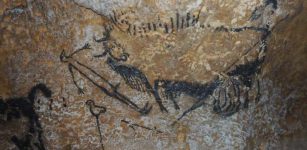 Ancient People Possessed Far Greater Knowledge Of Astronomy Than Previously Believed – Researchers Say
Archaeology | Nov 28, 2018
Ancient People Possessed Far Greater Knowledge Of Astronomy Than Previously Believed – Researchers Say
Archaeology | Nov 28, 2018 -
 7,000-Year-Old Male Skeleton In Garment Decorated With Sea Shells, Red Deer Teeth Identified In France
Archaeology | Mar 9, 2017
7,000-Year-Old Male Skeleton In Garment Decorated With Sea Shells, Red Deer Teeth Identified In France
Archaeology | Mar 9, 2017 -
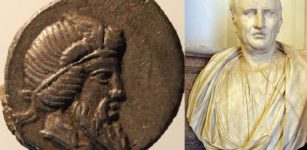 Scientists Solve The Mystery Of Cicero’s Puzzling Words By Analyzing Ancient Roman Coins – Evidence Of Financial Crisis?
Artifacts | Apr 6, 2022
Scientists Solve The Mystery Of Cicero’s Puzzling Words By Analyzing Ancient Roman Coins – Evidence Of Financial Crisis?
Artifacts | Apr 6, 2022 -
 Mythical Biringan City – Invisible Portal To Another World Where Dangerous Engkantos Reside
Featured Stories | Feb 2, 2018
Mythical Biringan City – Invisible Portal To Another World Where Dangerous Engkantos Reside
Featured Stories | Feb 2, 2018 -
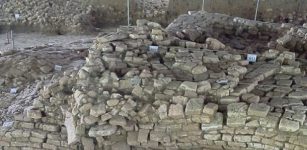 Wrecks of ancient ships found in Malaysia’s Sungai Batu ancient site
News | Sep 4, 2015
Wrecks of ancient ships found in Malaysia’s Sungai Batu ancient site
News | Sep 4, 2015 -
 Why Was Grette The Strong, Icelandic Poet And Warrior Afraid Of Darkness?
Featured Stories | Sep 30, 2023
Why Was Grette The Strong, Icelandic Poet And Warrior Afraid Of Darkness?
Featured Stories | Sep 30, 2023 -
 Intact 2,700-Year-Old Pacopampa Tomb Found in Northern Peru
Civilizations | Sep 17, 2015
Intact 2,700-Year-Old Pacopampa Tomb Found in Northern Peru
Civilizations | Sep 17, 2015 -
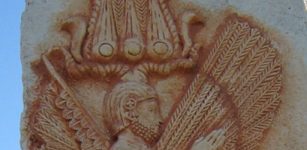 On This Day In History: Cyrus The Great And His Army Took Babylon – On Oct 12, 539 BC
News | Oct 12, 2016
On This Day In History: Cyrus The Great And His Army Took Babylon – On Oct 12, 539 BC
News | Oct 12, 2016 -
 Mysterious Disappearance Of Rome’s Founder Romulus And Strange Vision Of Proculus That United Ancient Romans
Featured Stories | May 26, 2021
Mysterious Disappearance Of Rome’s Founder Romulus And Strange Vision Of Proculus That United Ancient Romans
Featured Stories | May 26, 2021 -
 Oldest Known Projectile Points In The Americas Discovered In Idaho
Archaeology | Dec 23, 2022
Oldest Known Projectile Points In The Americas Discovered In Idaho
Archaeology | Dec 23, 2022 -
 This Ancient Roman Painting Survived Eruption Of Mount Vesuvius In 79 A.D.
Archaeology | Aug 21, 2017
This Ancient Roman Painting Survived Eruption Of Mount Vesuvius In 79 A.D.
Archaeology | Aug 21, 2017 -
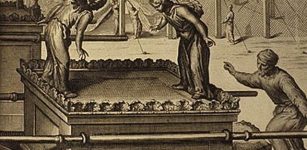 Secrets Of Ark of The Covenant Revealed In Ancient Manuscript
Biblical Mysteries | Jul 19, 2014
Secrets Of Ark of The Covenant Revealed In Ancient Manuscript
Biblical Mysteries | Jul 19, 2014 -
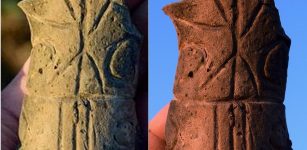 7,000-Year-Old Unique Lipnik Idol Statuette Unearthed In Moravian Gate Valley, Czech Republic
Archaeology | Dec 14, 2015
7,000-Year-Old Unique Lipnik Idol Statuette Unearthed In Moravian Gate Valley, Czech Republic
Archaeology | Dec 14, 2015 -
 Campus Mounds Are The Oldest Known Human-Made Structures In North America – New Research Shows
Archaeology | Aug 22, 2022
Campus Mounds Are The Oldest Known Human-Made Structures In North America – New Research Shows
Archaeology | Aug 22, 2022 -
 Fascinating Discovery Of An Inhabited Underground World In Medieval Wales
Featured Stories | Mar 2, 2024
Fascinating Discovery Of An Inhabited Underground World In Medieval Wales
Featured Stories | Mar 2, 2024 -
 Shining Ones And Magic In Ireland – Secret Wisdom Of The Gods
Celtic Mythology | May 9, 2014
Shining Ones And Magic In Ireland – Secret Wisdom Of The Gods
Celtic Mythology | May 9, 2014 -
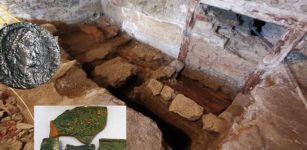 4th-Century Roman Coin And Pub-Like Structure With Heating System Excavated In Slovakia
Archaeology | Aug 11, 2020
4th-Century Roman Coin And Pub-Like Structure With Heating System Excavated In Slovakia
Archaeology | Aug 11, 2020 -
 January 2016: Lost Library Of John Dee Revealed In A Special Exhibition
Archaeology | Jan 24, 2016
January 2016: Lost Library Of John Dee Revealed In A Special Exhibition
Archaeology | Jan 24, 2016 -
 Murder Of Archbishop Thomas Becket: One Of Most Famous Crimes Of Middle Ages
Featured Stories | Jan 6, 2017
Murder Of Archbishop Thomas Becket: One Of Most Famous Crimes Of Middle Ages
Featured Stories | Jan 6, 2017




